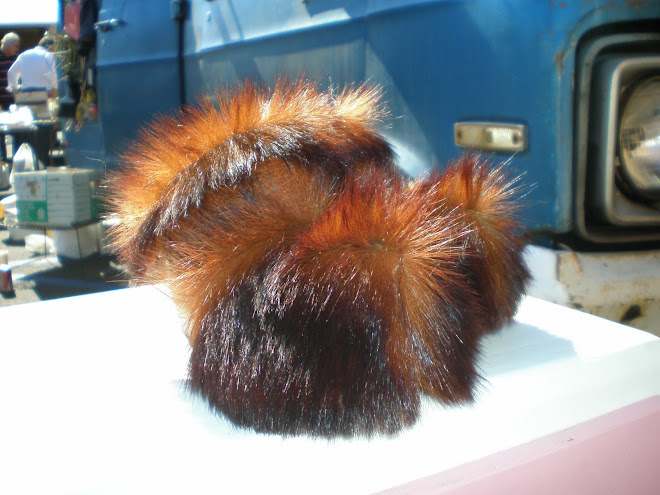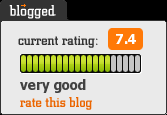Today was my father's last day as a jeweler in Miami's Seybold Building. He turned in his keys for #651, retired his two bathroom keys, and moved all his tools and machinery from his taller to his home garage. By all accounts, it was an uneventful day full of facile protocols of handing things in and receiving receipts and slips in security envelopes. If my memory serves me right and helps me recreate the ante, my father had been at Seybold working for himself, or for someone else, for almost 30 years.
Moms tells me mi viejo is exhausted from all the machinery he's been moving for the last couple of days; some of the tools in his shop were as dense as dying stars, and some of the grime had begun colonies of mugre. I suspect my father feels this is the end of an era for him, a sort of coup de grace of his identity as breadwinner. The way I see it: my father put two kids through college as a manufacturer of jewelry. There were periods when he worked for himself, and there were periods when he worked for other manufacturers, but there were always periods when he worked.
As early as 2011, CNN was reporting that Gold had reached a record high fetching $1900 for an ounce or a little over 28 grams. What this means is that less people buy jewelry and more people hoard gold during times when it is really high. But, by December of 2013 the Telegraph was reporting on gold's crash (as a commodity) and subsequent roller-coaster behavior throughout the year. Andrew Critchlow writes, "Gold has suffered its sharpest fall in 30 years, down almost 28pc over the past 12 months to close 2013 at about $1,200 (£725) an ounce."
Click Here: 100 Years of the Price of Gold
If you've never seen the Seybold, imagine an 10-story sandstone building with a half dome portico at the entrance. At the top, the corners of the building have square cornices that makes them look like bezels, or settings where a seminal stone might lie and let out a shine to attract shoppers. The columns between the mezzanine and the second floor are a darker sort of sandstone and make the Corinthian columns between the mezzanine and second floor kind of jut out, like tacky teeth. I have been looking at this building for almost fifteen of those years, and I have to recreate the image of it; so, there is also something very nonchalant, almost flippant, about the Seybold.
It was one of Miami's first skyscrapers, designed by the firm of Kiehnel and Elliott, an architecture firm from Pittsburgh responsible for many historical buildings in downtown Miami, Miami Beach, and Coral Gables.30 years seems like a lot, but given the iterations of what the Seybold Building is or was start in 1915, when John Seybold--a baker and confectioner--decides to build a dumpy "three-story building", I realize that the Seybold Building is merely 101 years old. By 1921, a rear annex two-story building was added, and by 1925, 8 additional floors were plopped on top of those tiers. The Seybold is on the register of historical sites (pg 9 of 40) in Miami, and it has several art deco flairs inside, like an exaggerated, sweeping staircase up to the mezzanine, and ornate, wooden banisters that look like they were plucked from the aquiline nose of a Gatsby.
According to my father, this move has been coming for a while. For a while, the new owners of Seybold have been quietly pushing out the jewelers, specifically the casters and other hazmat-Vulcans. I know you know this but it is standard operating procedure for jewelers to use cyanide as a cleaning agent and sparkler; furthermore, gold starts melting at a little below 2,000 degrees Fahrenheit, so you can imagine that it can get a little musty and toxic when the acetylene torch gets cooking. You don't even want to know what kind of noxious fumes circulate in the Seybold when it's close to Xmas. Mi viejo has no idea what they're going to do with the building, but he's astute enough to know that the new owners are going to try to maximize their equity by converting talleres into residential apartments, lofts, and luxury efficiencies and studios. Government Station in Downtown Miami, former repository of leagues of homeless, is set to welcome high-speed rail, the Brightline, a direct shot promising Orlando in three hours.
You do the math. And, yes, this kind of push is inevitable, pitiable, and yet people shrug their shoulders like I would be shrugging mine if this wasn't about my father. Your're right, you shouldn't give a shit, except my father raised my sister and I and put us through college with the jewelry he made and sold in Seybold, so yes, I feel like the final splinter of my tenure in Miami is being finally excreted from Miami's toe, a city I haven't lived in since 1999. But, progress can look different, and there are ways to honor the people who ensured you were hale and salient (I'm talking about the Seybold here) by being hale and salient entrepreneurs and ambassadors of hustle. My father is definitely an ambassador of hustle, and this isn't the last of his aesthetic stylings on the drill-bit mic because that guy can really speak with his hands.
Spicaresque:
A Spanglish blog dedicated to the works, ruminations, and mongrel pyrotechnics of Yago S. Cura, an Argentine-American poet, translator, publisher & futbol cretin. Yago publishes Hinchas de Poesia, an online literary journal, & is the sole proprietor of Hinchas Press.
Subscribe to:
Post Comments (Atom)


.png)

No comments:
Post a Comment